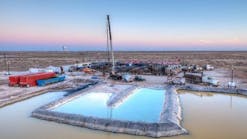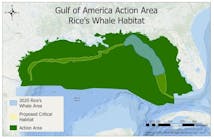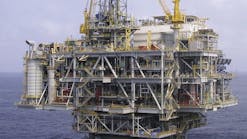For the survey crews of John E. Chance & Associates Inc., Lafayette, La.-part of the multinational Fugro group of companies-the job site is usually a rig in the Gulf of Mexico. That is, until a couple of months ago, when Chance played a key role in recovering a piece of space history-the Liberty Bell 7 space capsule.
For 38 years, Liberty Bell 7 rested on the ocean floor 3 miles down near the Bahamas. It was the only US spacecraft lost at sea after carrying astronaut Virgil "Gus" Grissom on a 15-minute suborbital flight on July 21, 1961.
After the Mercury capsule splashed down, emergency explosives detonated prematurely, blowing off the escape hatch, causing it to fill with water and sink 15,600 ft to the ocean floor-3,000 ft deeper than the Titanic sank.
One of the long-standing mysteries of US space exploration under the National Aeronautics and Space Administration has been the question of whether Grissom panicked and blew the hatch prematurely, causing the only loss of a US spacecraft at sea, or whether a mechanical malfunction caused the mishap. Grissom, who nearly drowned in the incident and died in 1967 in a fire along with two other astronauts during testing of the Apollo I space capsule, always denied having panicked.
The recovery of the space capsule was sponsored by the Discovery Channel, which broadcast a documentary on the expedition last December. Viewers of the documentary can decide for themselves whether the mystery was solved.
Search begins
Known for its expertise with satellite positioning, Chance was subcontracted by Oceaneering International Inc., Houston, the undersea search and salvage company, to assist with locating and retrieving the capsule.
Chance provided navigation and deepwater-positioning services by utilizing its proprietary graphic survey tool Starfix.Nav, which is a navigation system that incorporates true GIS (geographic information systems) functionality and graphic display in a comprehensive survey, monitoring, and calculation package. The core features of Starfix.Nav are the geodetic and survey computations, user interface and displays, data logging, and refined data processing. Chance used the system to create a grid from the projected flight path of the capsule, along with reported positioning from various sources supplied to it by Oceaneering.
Upon completion of the grid, Chance, along with the other high-tech explorers, braved rough seas to locate the NASA relic. Oceaneering International's Ocean Explorer 6000 deepwater sidescan sonar was used during the recovery to search the 24-sq mile grid. The search produced about 80 possible targets, which were narrowed down to 18, with 3 identified as prime.
The rescue
The investigation of the first of the 18 sites began with the Magellan 725 remote operated vehicle. As the ROV was lowered through the water column to a depth of 15,600 ft, Chance used its Sonardyne's Big Head USBL (Ultra Short Base Line) deepwater acoustic system and the 7823 transponder to track the ROV's positioning underwater. The very first site investigated by the ROV turned out to be Liberty Bell 7.
On July 20, 1999, the 81/2-ft titanium and aluminum spacecraft was drawn from the water-exactly 38 years after its historic flight. In an interview by ECHO-a Fugro in-house newsletter-Brad Chaumont, offshore survey technician, Marine Operations, commented on the operation for Chance. Chaumont said the strangest thing that he saw during the retrieval was when they found the capsule in 15,600 ft of water with a Coca-Cola can sitting right next to it. He said it was strange to think that here was a historic space relic in water half a mile deeper than the Titanic, and there was a Coke can sitting next to it.
Now, the tiny Mercury capsule is no longer surrounded by sand, waves, or sea life, and is being restored by the Kansas Cosmosphere and Space Center in Hutchinson, Kan., where it will be placed on display with the many other historic space artifacts of its time.


